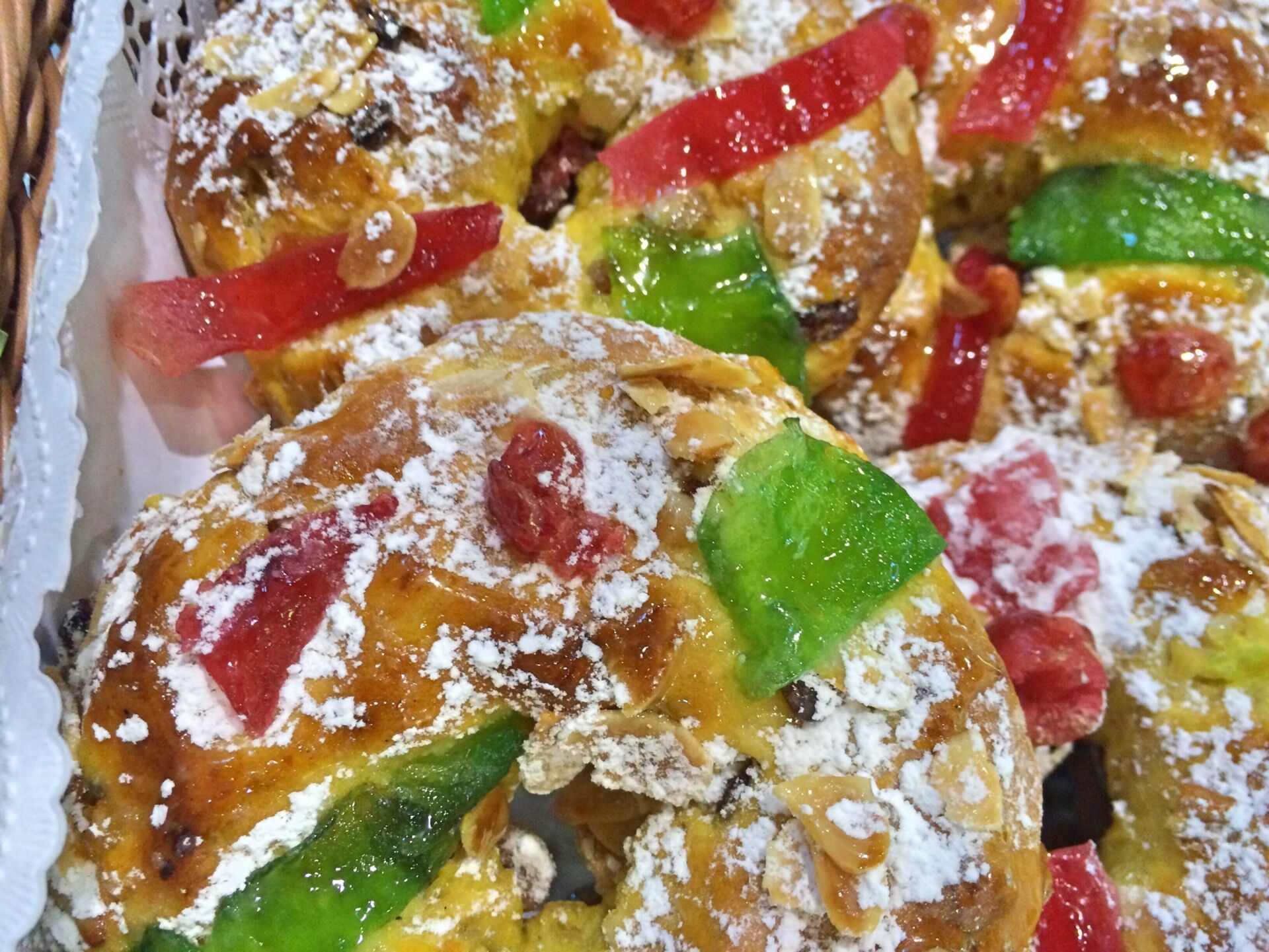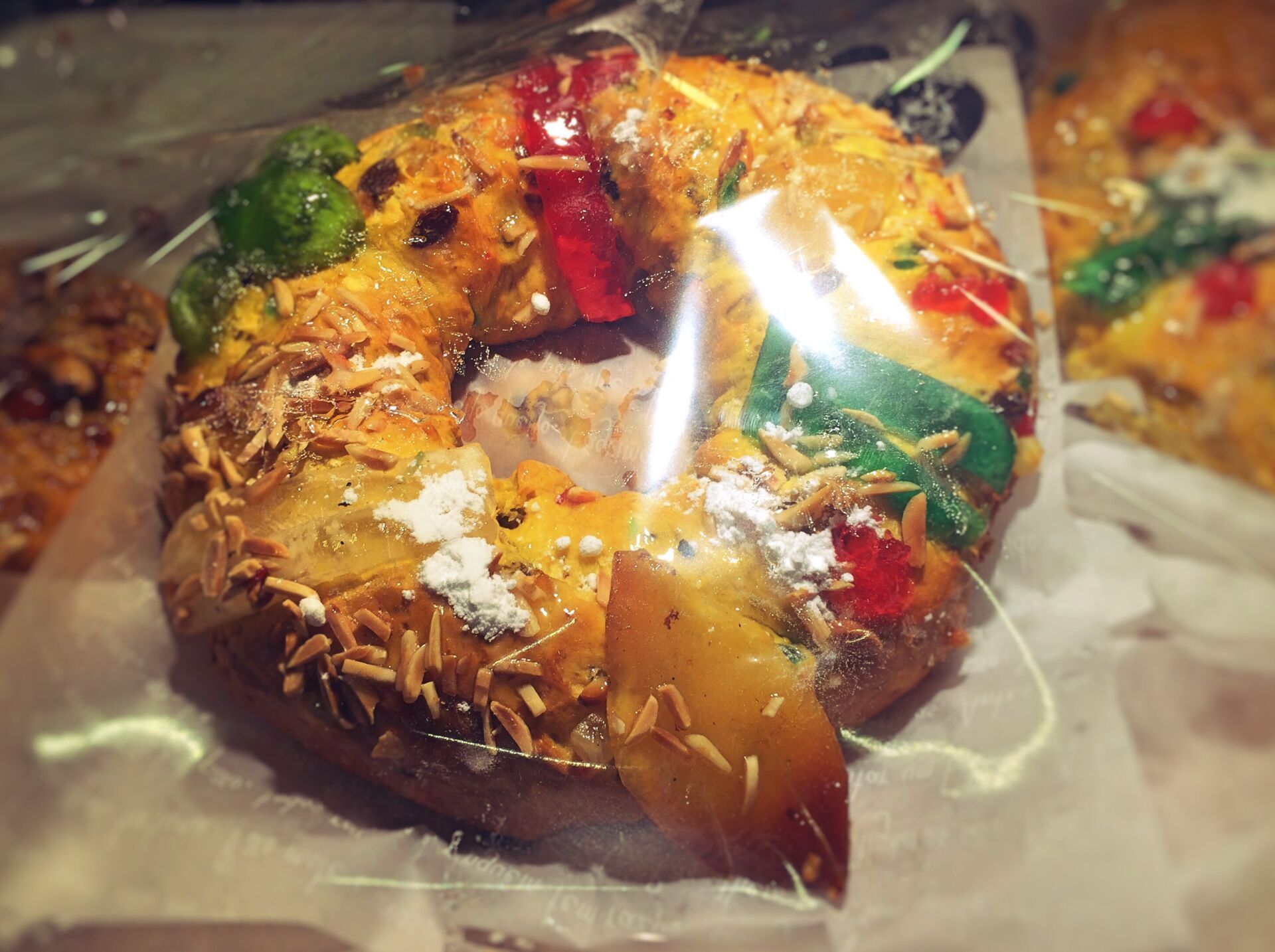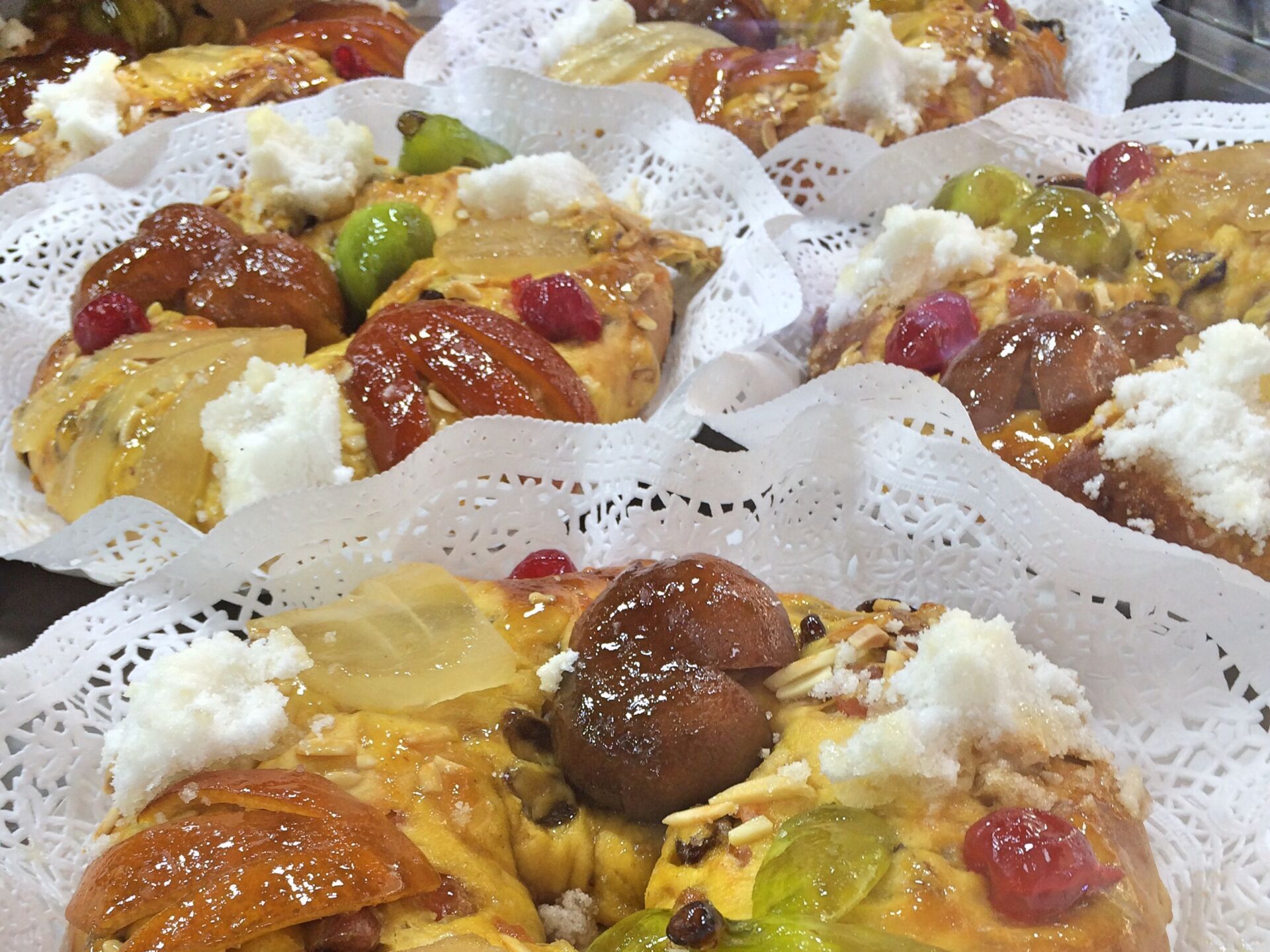I was kindly reminded of my age when I started discussing bolo-rei with my mom the other day. Why? Because I can still remember how this very traditional Christmas cake changed drastically somewhere between 1995 and 1997. Not the recipe, of course – that remains the same. But the element that used to make the entire experience of eating the cake extra fun has changed for good.
Bolo-rei literally means king cake and was introduced to Portugal in the 19th century. Its name derives from the fact that it is crown-shaped and is eaten specifically on the day of the Kings, January 6th (Dia de Reis), as well as the entire holiday season. Another reason for its name is that traditionally (and this is where my age matters), it contained a dried broad bean and a little trinket or gift hidden somewhere in the cake. The three kings offered gifts to baby Jesus and their cake also has a gift! As you cut the cake, the person to find the trinket in their piece would have good luck for the year; the poor person who got the dried broad bean had to buy the bolo-rei next year. As a child, this was all very exciting, as I’m sure you can imagine! But then, they stopped doing this because people either were breaking their teeth on the trinkets or choking on them or something. I just remember the disappointment I felt eating cake with no gift inside. How dull!

The cake itself is a simple white dough, with raisins, nuts and crystalized fruit on top, sprinkled with powdered sugar. If you’ve never had it, it’s not too dissimilar to the Italian panettone.
So if you want to be a little more Portuguese, this is what you do: If you go to your friend’s house during the holidays, you offer to take a bolo-rei (it’s ok if there’s more than one; people end up taking chunks of it home). Nobody actually makes their own bolo-rei – you buy it from supermarkets, patisseries, pretty much everywhere. The average Portuguese person probably consumes about 2 bolos-reis during the Christmas season – on top of all the other sweets and desserts we devour. After a while, you start knowing all your friends’ and relatives’ favorite part of the cake (some like the orange peel, some like the cherries, etc). It’s polite to remember who likes what part and to give them that. It’s not polite to pick off all the fruit before serving it. Finally, if there’s left-over cake, you can always slice it up, toast it, and spread some butter on it. Yum!




[…] sweets there are still made using these traditional 19th century recipes. Most noteworthy is their bolo-rei: the first bolo-rei was brought over from France to the Confeitaria Nacional and became so popular […]